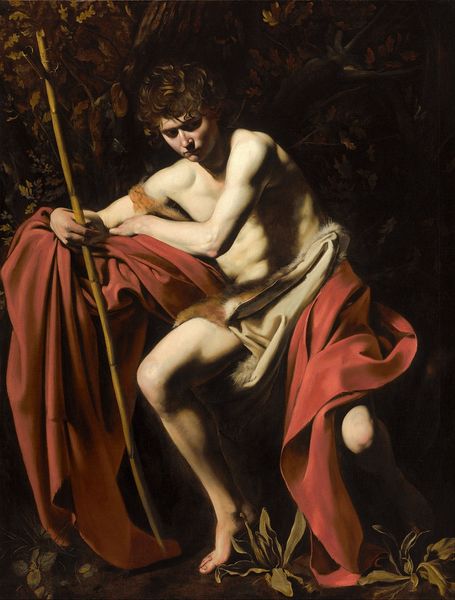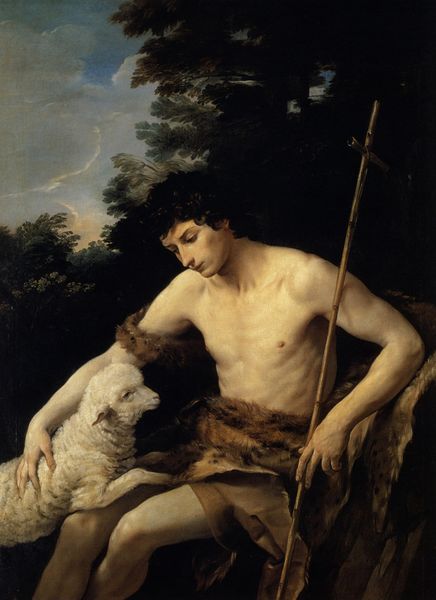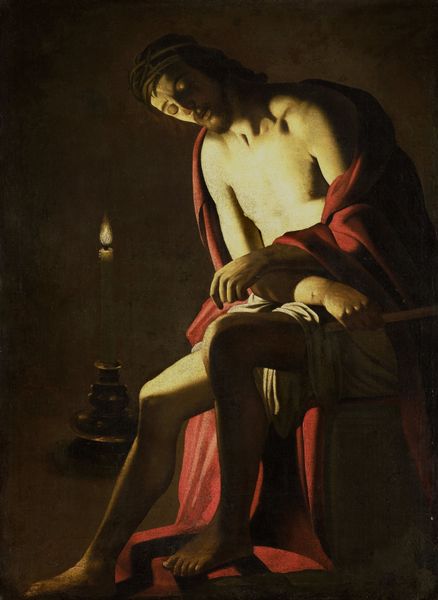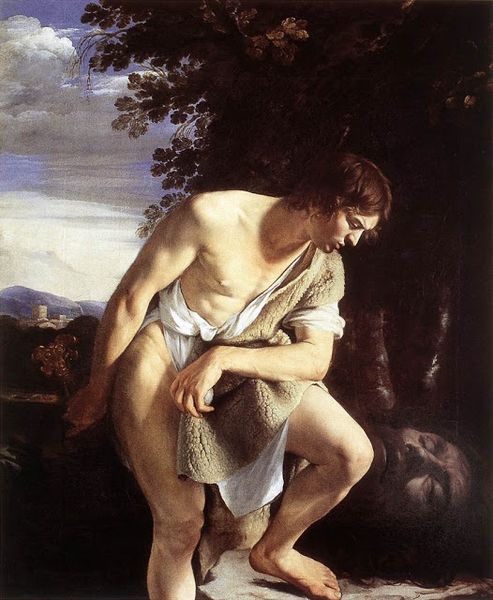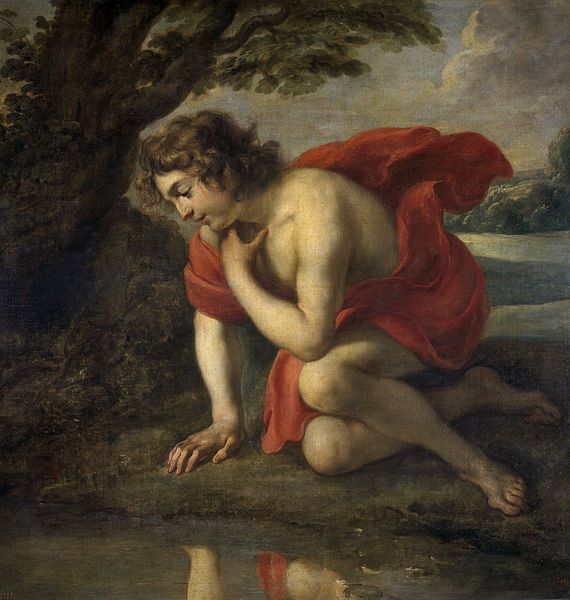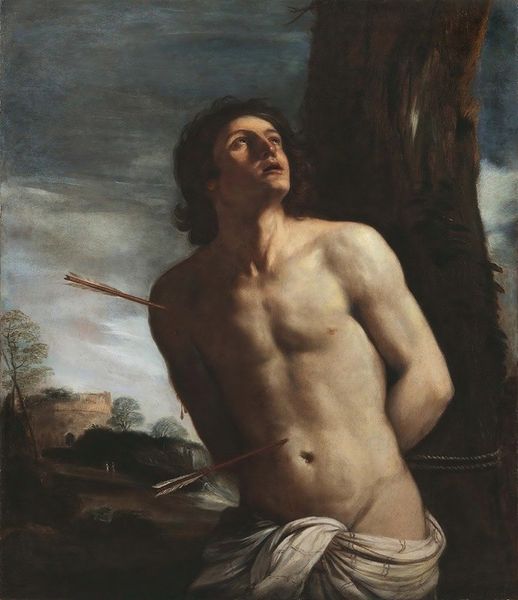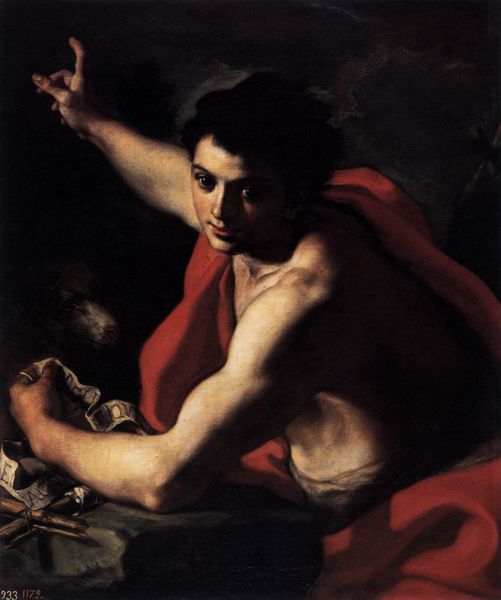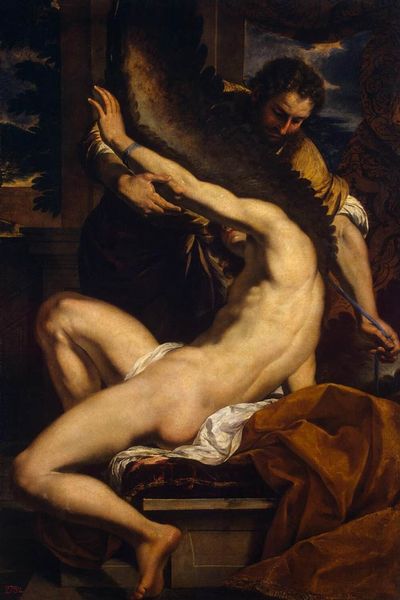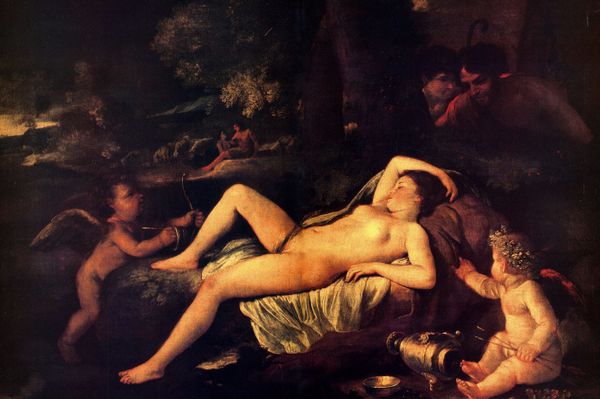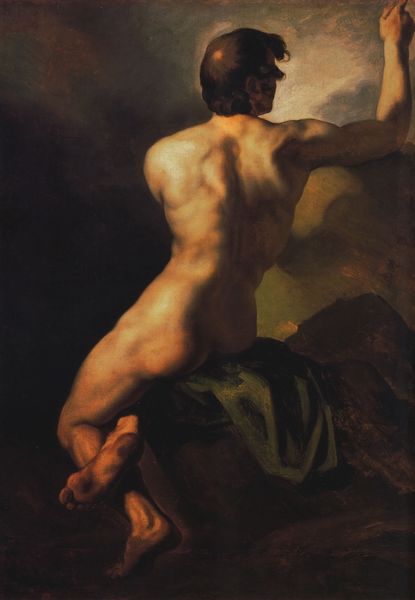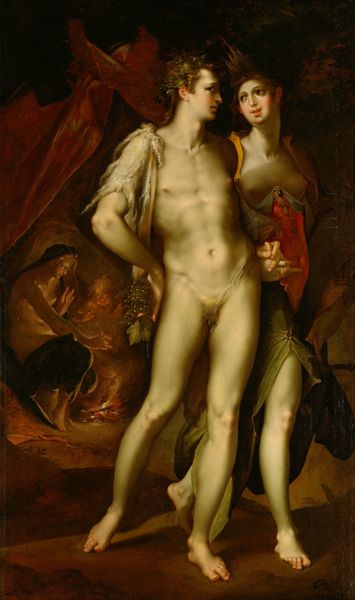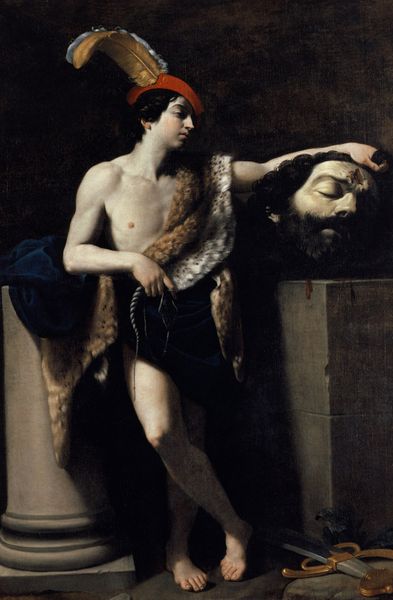
painting, oil-paint
#
portrait
#
narrative-art
#
baroque
#
painting
#
oil-paint
#
landscape
#
figuration
#
form
#
christianity
#
human
#
history-painting
#
academic-art
#
nude
#
realism
Copyright: Public domain
Curator: Van Dyck's "Saint John the Baptist in the Wilderness," dating from around 1625, presents a fascinating figure against a rather brooding landscape. Editor: It strikes me as rather melancholic. The way the light catches John's exposed flesh is almost unnerving against the darkness lurking around him. Curator: The interplay of light and shadow is central to its Baroque aesthetic. Observe how Van Dyck uses the tenebrism technique to spotlight John while obscuring the landscape, thereby creating a dynamic contrast. Semiotically, this reinforces the contrast between John's inner illumination, symbolized by the open book he holds, and the darkness, the world, that surrounds him. Editor: Right, and this reminds us that religious depictions during this period had particular political meaning. John's image, and the narratives it carries, resonated within the Catholic Reformation's emphasis on penance and the individual’s relationship with divinity. Images like these were actively used to inspire faith and reaffirm doctrine. Curator: The composition draws your eye inexorably up to the figure; from the lamb reclining in the shadows through the folds of fabric and finally, inevitably, to John's gaze, slightly averted. His physique certainly represents an interesting idealization of the human form. Editor: This "idealization", though, speaks to the patrons' desires and expectations, too. This isn’t just an individual interpretation of John but rather a statement about what an "enlightened" figure should represent—power, humility, spiritual introspection. Who commissioned this piece also plays a pivotal role. For whom was the work intended? Curator: While the provenance details remain relatively sparse, it’s very telling. We see here the intersections of personal piety and larger socio-religious currents influencing artistic production. Editor: Precisely. Considering those intertwined aspects reveals a multi-layered art object reflecting an entire era and its intellectual milieu. Curator: Thinking about Van Dyck’s choices from this vantage point illuminates aspects I hadn’t considered fully. Editor: And conversely, a close formal analysis makes us consider anew the painting's social relevance.
Comments
No comments
Be the first to comment and join the conversation on the ultimate creative platform.
